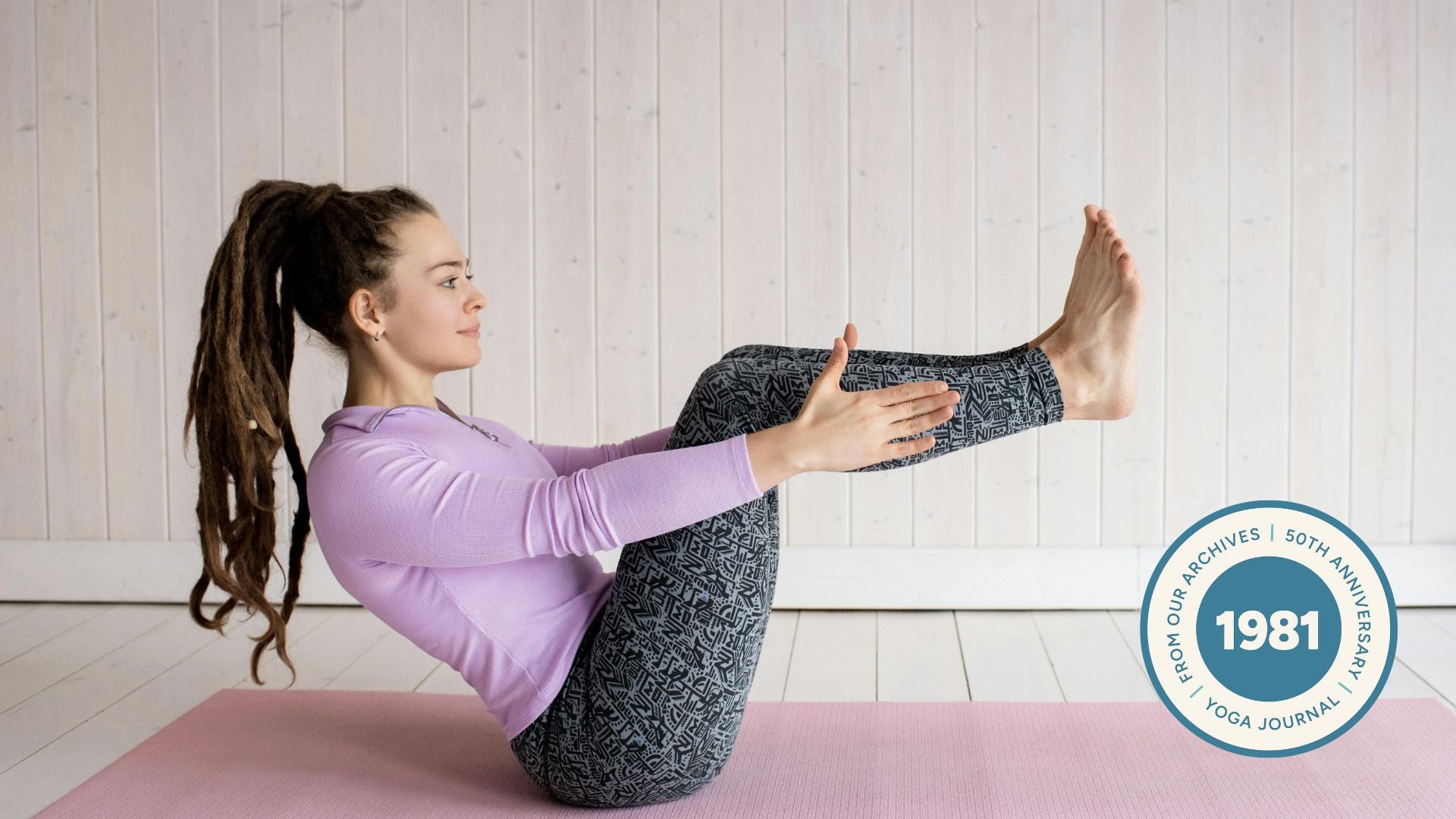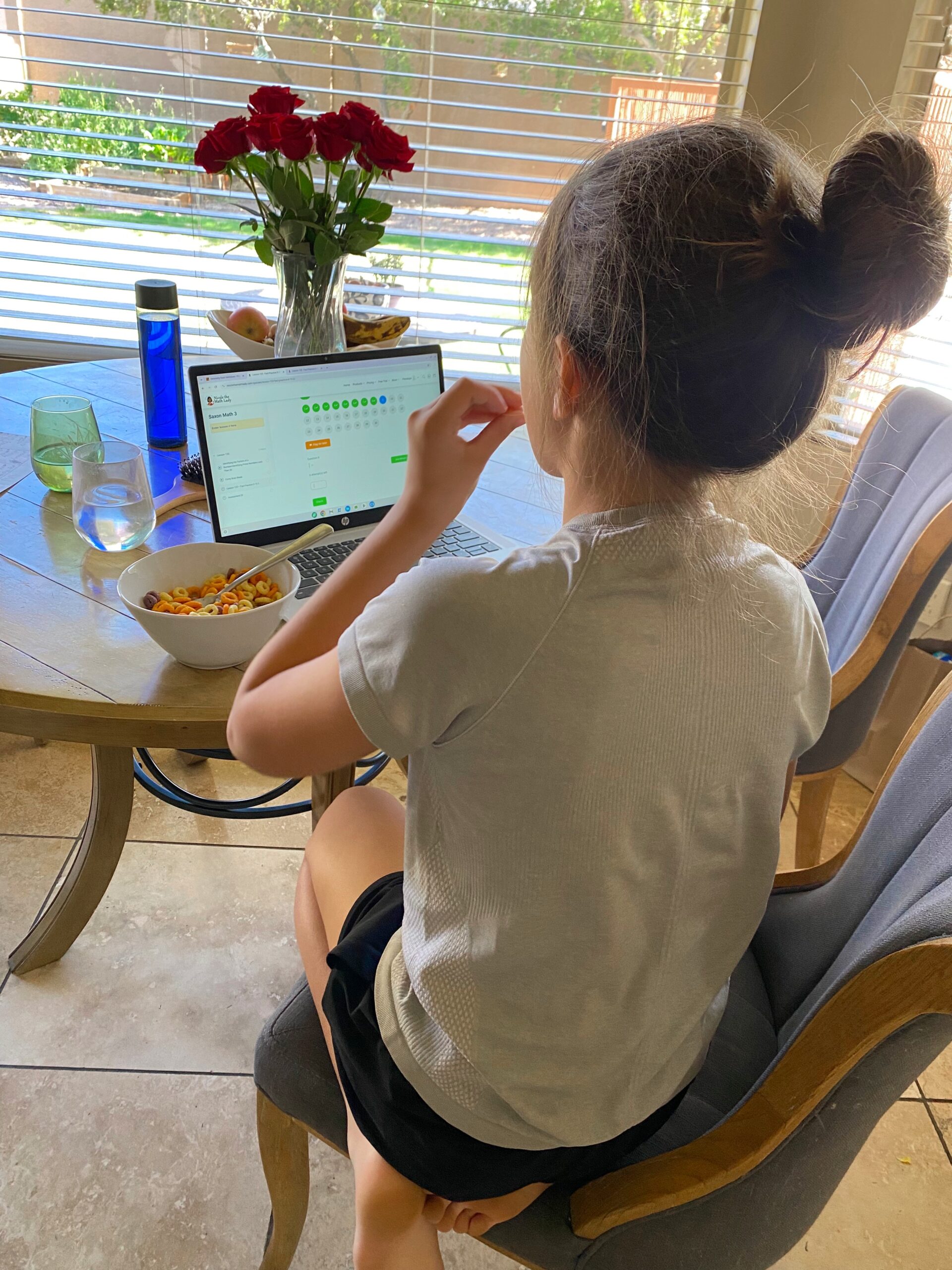“], “filter”: { “nextExceptions”: “img, blockquote, div”, “nextContainsExceptions”: “img, blockquote, a.btn, a.o-button”} }”>
Heading out the door? Read this article on the new Outside+ app available now on iOS devices for members!
>”,”name”:”in-content-cta”,”type”:”link”}}”>Download the app.
If classes at your local studio are regular medicine and a far-flung yoga retreat is inspirational, then a yoga shed is everyday goals—and if you’re anything like us, your Pinterest boards and social media feeds are full of them. Although carving out a spot in your living room or bedroom is the usual approach to a home practice, a yoga shed is entirely devoted to it.
Backyard yoga studios may seem aspirational (we’re talking thousands of dollars for pre-fab options), but if yoga is your way of life, the space can also make your yoga time more intentional. And what backyard studios lack in size, they make up for in charm, functionality, and accessibility. After all, making it to your mat is all the easier when your bespoke studio is mere steps away.
Why a Yoga Shed?
For some, investing in a yoga shed is borne of necessity rather than luxury. Yoga teacher Laurie Elcoate May of LEMon Yoga discovered this in 2020. “I didn’t have a space inside my house to teach online and I really wanted to continue my yoga business, so we decided to build a studio in my garden,” she says of her mini studio in Somerset, England. Though she imagined it would be a temporary fix, the studio ended up allowing her to shift her entire career path through sharing her yoga practice more widely.

May and her husband documented the build on YouTube, which is also where she began to film and share her online classes. “In some ways, I think having that space saved me during what was globally a very challenging time,” she says. “I was also in my first year postpartum after having my first baby and that space gave me room to just be me again.”
According to João Brás Filipe, an architect with Portugal-based firm Madeiguincho (which specializes in tiny spaces), this meeting of comfort and reach are among the most important aspects of a personal practice place—even a little one.
“In yoga studios, we strive to design spaces that feel both grounded and expansive, offering a retreat where one can connect with both their inner self and the surrounding landscape,” he says. This means taking cues from the environment of your backyard and planning accordingly.
What Is It Like to Design a Backyard Yoga Studio?
Even if you’re planning to invest in a prefab shed from Home Depot, Lowe’s, Studio Shed, and more have-worthy contenders, understanding the process of designing a small yoga studio from scratch can help guide your own. Focusing on this helps you create a vision for your space’s functionality, movement, and flow.
When Filipe is designing an outdoor yoga space, he usually aims to create a sense of protection on one side with views on the other side. “Some spaces call for openness and a seamless connection to nature, while others require a sense of seclusion for meditation and introspection,” he says. “More often, it’s a balance, carefully deciding where to open the space and where to create moments of enclosure.”
One of Madeiguincho’s builds, a swoon-worthy home garden yoga studio in Cascais, near Lisbon, visually represents this point. The space is positioned to showcase views of the property while keeping the energy contained. Plus, there’s plenty of light.
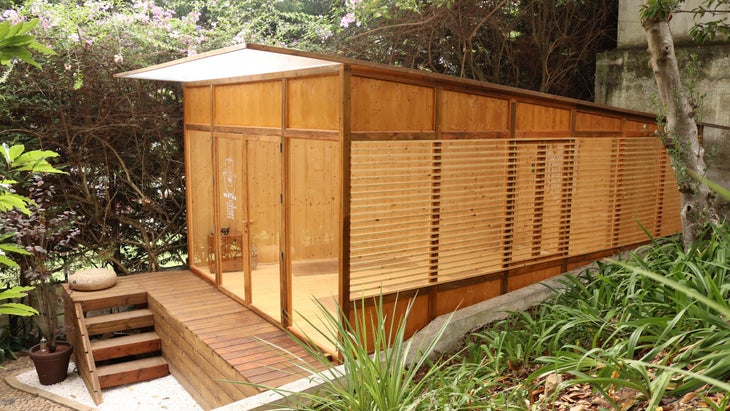
“Light plays a crucial role in shaping this experience, diffusing through skylights, frosted glass, or subtle openings ensuring a gentle, soothing atmosphere,” says Filipe of the studio.
Next come the more tangible aspects. “We explore materials, textures, and overall ambiance, often through mock-ups that allow us to test and refine elements like wood finishes and color tones,” says Filipe. “This approach ensures that the final space truly reflects the client’s expectations while maintaining our architectural and craftsmanship standards.”
Things to Consider When Choosing Your Yoga Shed
No matter what sort of yoga shed you’re imagining, materials—and attention to the elements—matter.
“Keep in mind where in the world you live and what seasons are like where you are,” says May. “If I had my time in that studio again, I would have invested in more insulation from the beginning—definitely something we’ve learned from and factored into our second yoga studio build!”
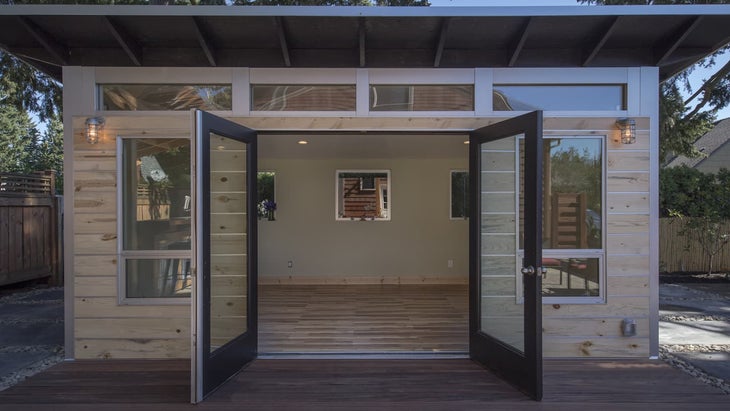
Filipe suggests relying on harder woods that can withstand frequent use for flooring, along with generally weather-resistant materials to enhance longevity. In terms of the structure’s materials and color, keeping things on the lighter side lends to a pleasant atmosphere—and allows the shed to play well with natural light.
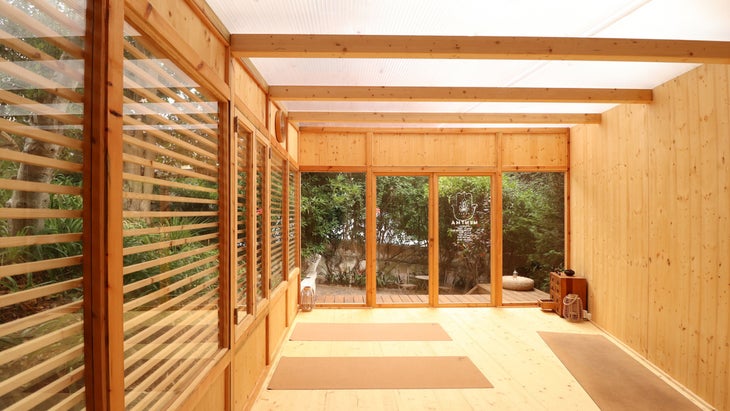
Whether your yoga shed is a custom creation or a literal shed that you’ve reimagined, the intention remains the same: creating a space you love, and that feels like you, in support of your practice.
Dreaming of a yoga shed? Check out options at Home Depot, Lowe’s, and Studio Shed.



